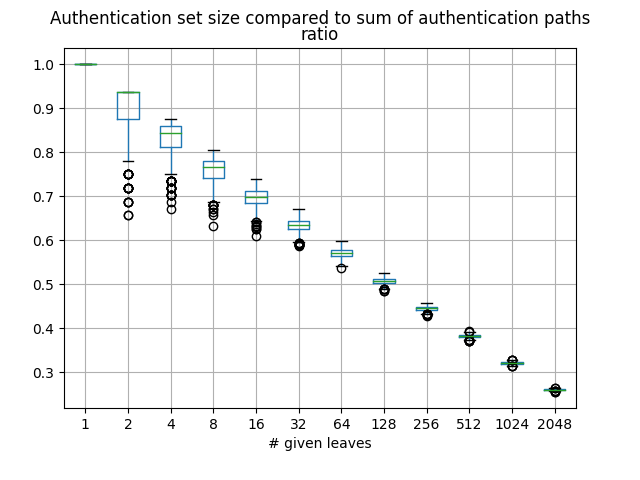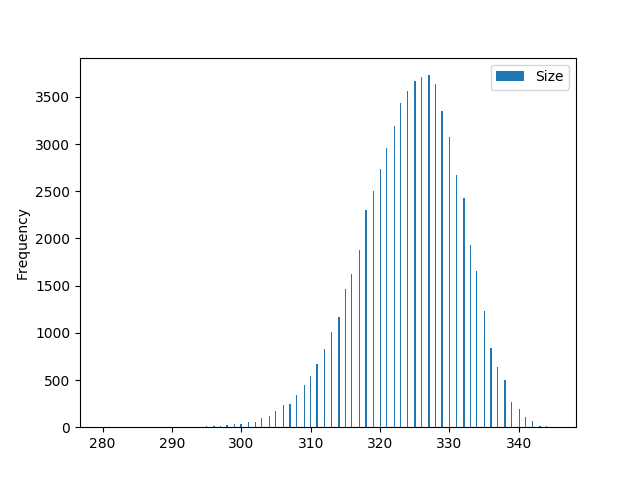Code and statistics related to authentication sets can be found here.
- authset.py contains a Python implementation of
authentication sets, as well as code to run tests to compare authentication
sets to the original optimization used in SPHINCS.
Run
python3 authset.pyto run tests on the performance of authentication sets. - authset.c contains a C implementation of authentication sets, and some demo code to illustrate how to use it.
- plot.py contains code to produce the plots in this README
- measure.py contains code to export test data as a csv
This work is part of my master's thesis, which is yet to be published. More information related to authentication sets will be available in there.
Authentication sets compress the authentication paths of multiple leaf nodes in a binary hash tree.
Alice has a binary hash tree of height h. Bob only knows the root of the tree. Now, Alice wants to prove to Bob that a specific leaf node, n, is part of the tree. To do this, she can reveal the authentication path of the leaf node to Bob. The authentication path of a leaf node n is the smallest set of nodes that, together with n, can be used to restore the root node of the tree.
To authenticate more than one leaf node, Alice can simply send Bob the authentication paths of all those leaf nodes. However, as soon as more than one leaf node needs to be authenticated, there will always be some redundancy between the authentication paths: Different paths may contain the same node, making it redundant, or the information in one path may allow the computation of a node required in another path. Authentication sets are a way to utilise this redundancy.
Authentication sets are never bigger, and usually smaller than the combined size of the authentication paths. The following graph shows how their size compares to the combined size of the authentication paths, in a tree of height 16. For example, if 16 leaf nodes are given, authentication sets are on average 30% smaller than the sum of the authentication paths.
In the best case scenario, authentication sets can be drastically smaller than the sum of the authentication paths. For example, in a binary tree of height 16, with 32 revealed leaf nodes, authentication sets can be as small as 11 nodes, while the separate authentication paths have a combined size of 16 * 32 = 512 nodes. In reality, however, the size of authentication sets is usually closer to the worst-case size. The following graph shows how the size of authentication sets are distributed for 32 given leaf nodes in a tree of height 16:
Nonetheless, here the worst-case size of the authentication set, 352 nodes, is still significantly smaller than the combined size of the separate authentication paths (512 nodes), and still smaller than the optimization used in SPHINCS, which uses 384 nodes.

